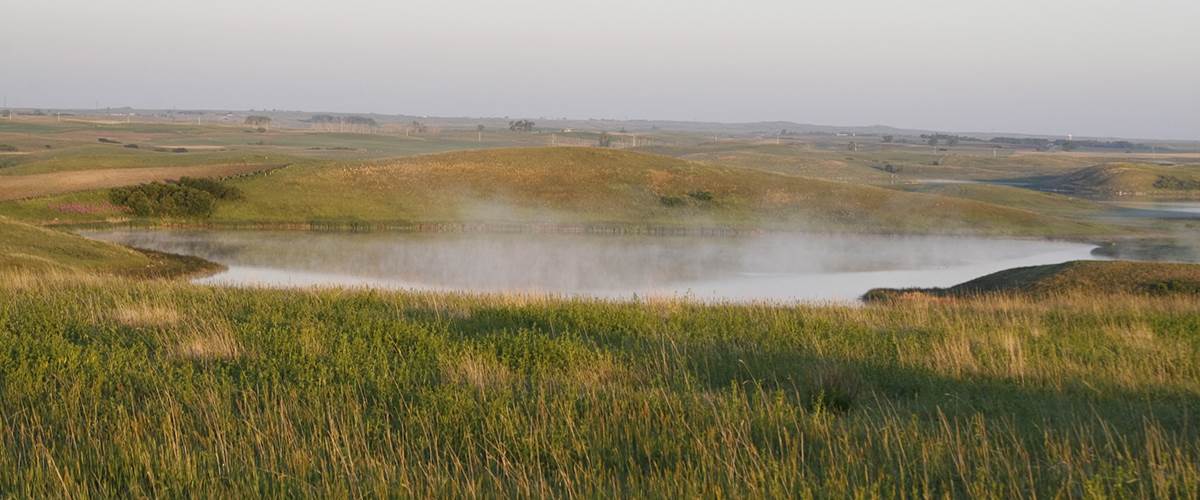Biodiversity in the Grassland Biome
Diversity loss in grassland habitats threatens waterfowl

Biological diversity ("biodiversity") refers to a broad spectrum of types and levels of biological variation. One of the ways scientists quantify Earth's terrestrial biodiversity is by classifying vegetation into large, regional ecological units by dominant vegetative pattern, better known as biomes. These biomes include the tropical forest, savanna, desert, chaparral, grassland, temperate forest, taiga or boreal forest, and tundra. Each biome is distinctive due to the amount of annual precipitation, number of frost-free days and other physical and biological factors.
The grassland biome covers about one-quarter of the Earth's land surface and in North America grasslands account for about 15 percent of the continent. Ecological processes such as fire and precipitation help to maintain the unique character of grasslands. Frequent fire prevents woody plants from dominating grassland habitats, as does relatively low annual precipitation. Annual precipitation in the grassland biome of North America falls in a gradient from west to east, with the shortgrass prairie to the west receiving up to 10 inches, the mixedgrass prairie in the central portion of the continent receiving up to 20 inches, and the tallgrass prairie further east enjoying precipitation of up to 40 inches per year.
Unique from most other biomes, grasslands are relatively simple in structure but rich in number of species. However, most areas of the prairie have experienced serious declines in biodiversity. Grasses have been especially impacted by decades of human induced alterations to the prairies that have allowed for the invasion of non-native species. Today, non-native grasses account for 13 - 30 percent of prairie grass species.
Loss of diversity continues as forested patches, tilled soil, and woody corridors increase on the prairie landscape. Grasslands of the Great Plains once acted as a virtually impenetrable barrier between wildlife and plants of eastern and western forests. Where new deciduous forests border highways and communities, plants, birds and mammals previously unknown on the prairie now have migration corridors. Altered prairie landscapes have fostered reduced biodiversity by encouraging hybridization between species that once were geographically isolated. Such is the case with the hybridization of at least six sub-species of birds along forested tracts and new forest corridors.
Certainly, the grassland biome is much different today than before extensive alteration. But with continued persistence and action by dedicated conservation interests, biodiversity can be preserved and increased throughout the region.
